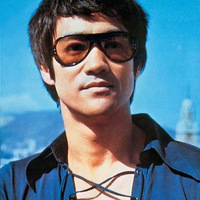New & Highlighted by Thomas Grant
Conferring legal personhood on purely synthetic entities is a very real legal possibility, one un... more Conferring legal personhood on purely synthetic entities is a very real legal possibility, one under consideration presently by the European Union. We show here that such legislative action would be morally unnecessary and legally troublesome. While AI legal personhood may have some emotional or economic appeal, so do many superficially desirable hazards against which the law protects us. We review the utility and history of legal fictions of personhood, discussing salient precedents where such fictions resulted in abuse or incoherence. We conclude that difficulties in holding ''electronic persons'' accountable when they violate the rights of others outweigh the highly precarious moral interests that AI legal personhood might protect.
Papers by Thomas Grant
Georgia Journal of International Comparative Law, 2014
Bepress Legal Series, 2006
American University International Law Review, 2000
... Russ Burns, Chris Holbrook, Stephanie Ierino, and Federica Paddeu assisted with copyediting. ... more ... Russ Burns, Chris Holbrook, Stephanie Ierino, and Federica Paddeu assisted with copyediting. 2 Crawford The Creation of States in International Law 2nd edn (2006) 17495; Dugard Recogni-tion and the United Nations (1987) 41170. ...
International Legal Materials, 2009
European Journal of International Law Journal Europeen De Droit International, 2000

International Community Law Review, 2015
The diversity of international actors numbers among one of the main phenomena of the modern inter... more The diversity of international actors numbers among one of the main phenomena of the modern international system. Dating the diversity to recent years is understandable in view of how it increased after 1945, but it has an earlier history. The League of Nations encountered a range of potential participants much wider than the core group of Powers which had been instrumental at the Peace Conference in constituting it. To an extent, the Covenant of the League envisaged a widening of participation. This was through a provision for admission of new members that, unlike Article 4 of the United Nations Charter, was not limited to entities described as States as such. In practice, only States became members; but there were other innovations which are relevant to institutions seeking to accommodate diversity in the present day as well. These merit further consideration as part of a renewed focus on the interwar era.
Vanderbilt Journal of Transnational Law, Mar 1, 2000
Page 1. VANDERBILT JOURNAL OF TRANSNATIONAL LAW VOLUME 33 MARCH 2000 NUMBER 2 Bast Timor, the UN ... more Page 1. VANDERBILT JOURNAL OF TRANSNATIONAL LAW VOLUME 33 MARCH 2000 NUMBER 2 Bast Timor, the UN System, and Enforcing Non-Recognition in International Law Thomas D. Grant Abstract This Article seeks ...
American University International Law Review, 1997
International Affairs, 2003
Indiana Journal of Global Legal Studies, 2004









Uploads
New & Highlighted by Thomas Grant
Papers by Thomas Grant